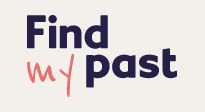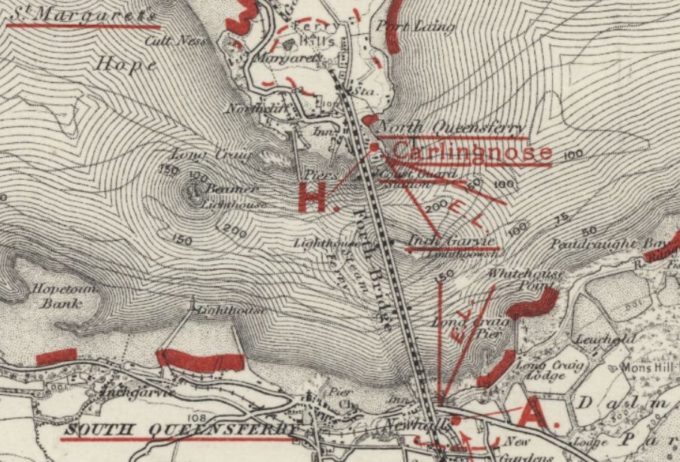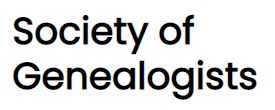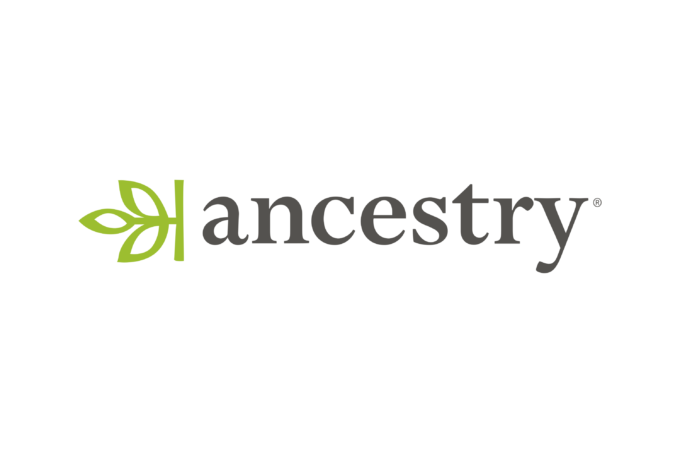
Baptisms from 1921, and marriages and banns from 1936, are now available on Findmypast.
While there are just 371 baptisms, and 334 marriages and banns, each is transcribed with a link to the original record image.

Baptisms from 1921, and marriages and banns from 1936, are now available on Findmypast.
While there are just 371 baptisms, and 334 marriages and banns, each is transcribed with a link to the original record image.
 Recently added, 20th-century military maps to the NLS website, including very detailed plans of defensive works in and around the Forth and Clyde estuaries, constructed before and during the First World War. These formerly classified plans were the most detailed surveys of these sites, and allow the terrain and defences to be scrutinized in minute detail.
Recently added, 20th-century military maps to the NLS website, including very detailed plans of defensive works in and around the Forth and Clyde estuaries, constructed before and during the First World War. These formerly classified plans were the most detailed surveys of these sites, and allow the terrain and defences to be scrutinized in minute detail.
Also online are detailed town plans of Aberdeen, Dundee, Edinburgh, and Glasgow, along with various special series maps. These series maps include some of the attractive and colourful Ordnance Survey Tourist Series, special Administrative District Maps of Glasgow, as well as geological and soil maps.
TheGenealogist this week added 85,959 individuals from the 1910s property tax records for the Borough of Haringey. That makes over 1 million individuals now in this unique Lloyd George Domesday Survey recordset.
Covering the areas of Hornsey Central, Hornsey East, Hornsey West, as well as Tottenham A, Tottenham B, Tottenham C and Wood Green, this week’s release is made up of maps and field books that name property owners and occupiers.
Read TheGenealogist’s article that finds the Tottenham cottage responsible for giving the old Spurs football ground its popular name: https://www.thegenealogist.co.uk/featuredarticles/2021/haringey-land-valuation-records-uncovers-the-modest-house-that-gave-its-name-to-a-famous-football-stadium-1429/
 Exclusive to Findmypast, The Catholic Heritage Archive has grown, now with 447,663 new baptism, marriage, burial, and congregational records from Southwark.
Exclusive to Findmypast, The Catholic Heritage Archive has grown, now with 447,663 new baptism, marriage, burial, and congregational records from Southwark.
235,580 baptisms from 1781 to 1912.
57,286 marriages from 1808 to 1911.
24,499 burials from 1820 to 1911
130,295 congregational records from 1810 to 1911
Is your parish of interest in Southwark? A present-day directory of the Arch-diocese is at http://directory.rcsouthwark.co.uk/
Here, arranged by the increase in the number of indexed records in the past week, are the FamilySearch UK collections being worked on.
| Collection | New Indexed Records | Total Indexed Records | Percent Added |
|---|---|---|---|
| Middlesex Parish Registers, 1539-1988 | 101,216 | 2,610,916 | 3.9 |
| Lancashire Non-Conformist Church Records, 1647-1996 | 31,970 | 306,619 | 10.4 |
| Northumberland Non-Conformist Church Records, 1613-1920 | 5,811 | 148,156 | 3.9 |
| Essex Non-Conformist Church Records, 1613-1971 | 4,674 | 154,131 | 3.0 |
| Surrey Marriages Bonds and Licenses, 1536-1992 | 3,864 | 7,086 | 54.5 |
| Lancashire, Marriage Bonds and Allegations, 1746-1799 | 3,553 | 22,008 | 16.1 |
| Herefordshire Bishop’s Transcripts, 1583-1898 | 335 | 1,545,469 | 0.0 |
| Gloucestershire Non-Conformist Church Records, 1642-1996 | 207 | 134,431 | 0.2 |
| Lincolnshire, Marriage Bonds and Allegations, 1574-1885 | 129 | 73,059 | 0.2 |
| Hertfordshire, Marriage Bonds, 1682-1837 | 58 | 8,958 | 0.6 |
Why are deaths now significantly fewer than normal?
According to a release from Statistics Canada.
from the end of March 2020 to the beginning of April 2021, an estimated 62,203 deaths were reported among Canadians aged 0 to 64. This represents 5,535 more deaths than expected were there no pandemic, after accounting for changes in the population such as aging. Over the same period, 1,380 COVID-19 deaths have been attributed to the same age group (those younger than 65), suggesting that the excess mortality is, in large part, related to other factors such as increases in the number deaths attributed to causes associated with substance use and misuse, including unintentional (accidental) poisonings and diseases and conditions related to alcohol consumption.
Statistics Canada. Table 13-10-0792-01 Adjusted estimates of excess mortality, all ages, all sexes by week.
Statistics Canada does not comment on the many fewer than expected deaths in the last part of the period. Could it be that some of the earlier deaths were people who would have died a natural death a few months later? Or perhaps wearing masks, social distancing and less travel has a protective effect beyond that for COVID-19? It seems doubtful it’s the result of vaccination as mortality transitioned from more to fewer than normal deaths for all age groups in February, at the beginning of the month for the oldest cohort and the end of the month for the youngest.
The National Heritage Digitization Strategy (NHDS) was established in 2016 as a national plan to ensure the long-term preservation of documentary heritage records by encouraging quality, standards-based efforts.
In the subsequent five years what has been accomplished?
In winter 2017, with $25K funding from the Salamander Foundation, issues of four indigenous newspapers were digitized — Windspeaker (1986-2015), Ha-Shilth-Sa (1974-2017), Turtle Island News (2001-2013) and Nunatsiaq News (1976-78).
Scan the NHDS website and you’ll find surveys and planning. If any other digitization actually occurred it’s not apparent. You’d think any other successes attributable to the NHDS would be shouted from the rooftops.
We are only what we do, not what we say we are.
Isadore Sharp
Now NHDS is embarking on strategic planning. The aim is to identify short-term and long-term projects and initiatives to be undertaken by the NHDS, understand community-driven priorities, and assist in shaping the organizational structure of NHDS going forward.
To that end, a survey that should take approximately 20 minutes to complete is at https://form.simplesurvey.com/f/l/nhds-strategic-planning-survey/.
Responses are due by Monday, 9 August 2021.
Is it worth responding?
In addition, NHDS will be holding a variety of engagement opportunities throughout the year, including an open community call planned for fall 2021. For more information visit: https://nhds.ca/nhds-strategic-planning-process-2021/.
Will ultimate clients, like researchers (academic, business and independent) and most archives’ largest client group, genealogists, be specifically invited.
 To mark the 80th anniversary of the Blitz, Ancestry commissioned 80 pieces of art, each inspired by historical records from WWII. Explore the gallery to see stories of everyday people from around the UK brought to life.
To mark the 80th anniversary of the Blitz, Ancestry commissioned 80 pieces of art, each inspired by historical records from WWII. Explore the gallery to see stories of everyday people from around the UK brought to life.
Check out the YouTube video on the project and see the array of art.
Recommended. Bravo Ancestry!
 There’s something in the air. Website designs are changing. The OGS site changed recently. The BIFHSGO site will change soon. And the UK Society of Genealogists site just changed.
There’s something in the air. Website designs are changing. The OGS site changed recently. The BIFHSGO site will change soon. And the UK Society of Genealogists site just changed.
This is the first stage in the website transformation and in the coming weeks we will continue to build up further content about our collections and services that you will hopefully find interesting and useful. We will also be expanding the members-only content for you to enjoy this summer. and will continue under development.
The web address is unchanged — sog.org.uk/.
It takes a while to get familiar with a new design and to know where to find the items you use most often. Expect a learning curve.
 Ancestry now has Staffordshire transcription records for the Church of England. These are transcriptions, no images of the original.
Ancestry now has Staffordshire transcription records for the Church of England. These are transcriptions, no images of the original.
Births and Baptisms, 1813-1900: 3,500,466 records
Marriages and Banns, 1754-1900: 1,688,029 records
Deaths and Burials, 1813-1900: 740,349 records
Baptisms, Marriages and Burials, 1538-1812: 3,100,307 records
Ancestry makes no reference to a source other than the Staffordshire Record Office.
This is Ancestry playing catch-up. Findmypast and FamilySearch had a cooperative project filming and indexing those Church of England parish records some years ago.
FamilySearch already has them in its 4,850,444 item collection England, Staffordshire, Church Records, 1538-1944 which appeared in 2017. Images are linked but available only on a restricted basis at Family History Centres and affiliate libraries.
Findmypast has both transcripts and linked images in a collection that was built up starting in 2014:
Banns, 1653 and 1900: 297,663 records
Baptisms, 1538 – 1900: 1,949,460 records
Marriages, 1538-1900: 984,978 records
Burials, 1538-1900: 1,246,084 records
Choose from free online events in the next five days. All times are ET except as noted. Those in red are Canadian, bolded if local to Ottawa. Assume registration in advance is required; check so you’re not disappointed.
Tuesday 13 July, 2 pm: Virtual Genealogy Drop-In, from Ottawa Branch of OGS and The Ottawa Public Library. https://ottawa.ogs.on.ca/events/.
Tuesday 13 July 2:30 pm: Using Facebook for Genealogy, by Rhonda Stoffer. for Allen Country Public Library Genealogy Center. https://acpl.libnet.info/event/5324621
Wednesday 14 July, 8 pm: Comparing Jewish Resources on the Giant Genealogy Websites, by Ellen Kowitt for Legacy Family Tree Webinars. https://familytreewebinars.com/webinar_details.php?webinar_id=1635
Thursday 15 July. 4 pm: Family Tree Maker. by Mark Olson for Toronto Branch OGS. Free for Toronto Branch members; $5 fee for non-members.
https://torontofamilyhistory.org/event/ftm-july2021/?instance_id=1459
Thursday 15 July, 6:30 pm: Become the Family Historian,
Before You Become Family History!, by Ken Burgener for Allen Country Public Library Genealogy Center. https://acpl.libnet.info/event/5324600
Friday 16 July 2 pm: Using Irish newspapers and other printed material, by Natalie Bodle for Legacy Family Tree Webinars. https://familytreewebinars.com/webinar_details.php?webinar_id=1667
Coming
Tuesday 20 July, 8 pm: The Time of Cholera: A Case Study about Historical Context, by Alison Hare for Legacy Family Tree Webinars and BCG.
https://familytreewebinars.com/webinar_details.php?webinar_id=1591
19 – 26 September 2021: BIFHSGO Conference. Irish Lines and Female Finds: Exploring Irish records, female ancestors and genetic genealogy. www.bifhsgo2021.ca/.
 Editor Helen Tovey comments in her lead column about an article in this issue on whether to prune your family tree. “Now I think we can agree that pruning a family tree is a terrible idea.” “So I would say definitely don’t even think about pruning …”
Editor Helen Tovey comments in her lead column about an article in this issue on whether to prune your family tree. “Now I think we can agree that pruning a family tree is a terrible idea.” “So I would say definitely don’t even think about pruning …”
Rather than the analogy of a tree why not a garden. It has a variety of plants —shrubs, bushes, flowers of different colours that appear at different seasons, big ones, small ones (some as big as your head!), vegetables and herbs.
You may want just direct line ancestors, maybe for DNA purposes. Perhaps divide by paternal and maternal sides. Perhaps one associated with a prominent ancestor, or a brick-wall ancestor.
The garden analogy is good because you do need to weed out the speculative connections that turn out to be errors, we all make them along the way.
Here is an almost complete table of contents.
Family History News
Key 20th Century Scottish Resources
Dear Paul
20 Things You Need to Know About FamilySearch
The Life, Times and Mysterious Death of Josiah Henry Harris
Trade Directories
What We Learned at DNA Bootcamp
Family Tree Acadamy: 19th C Naval Records
Books
The Online Genealogical Index
DNA Workshop
Family Tree Generator
Twigs
Diary Dates
Your Questions
Diary Dates
Letters
Thoughts On
A reminder Family Tree Magazine may well be available free through Overdrive through your Public Library.